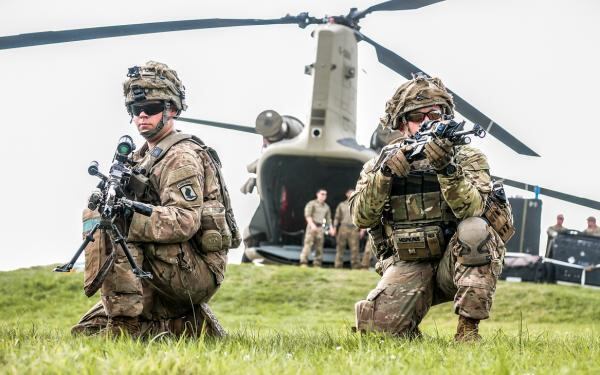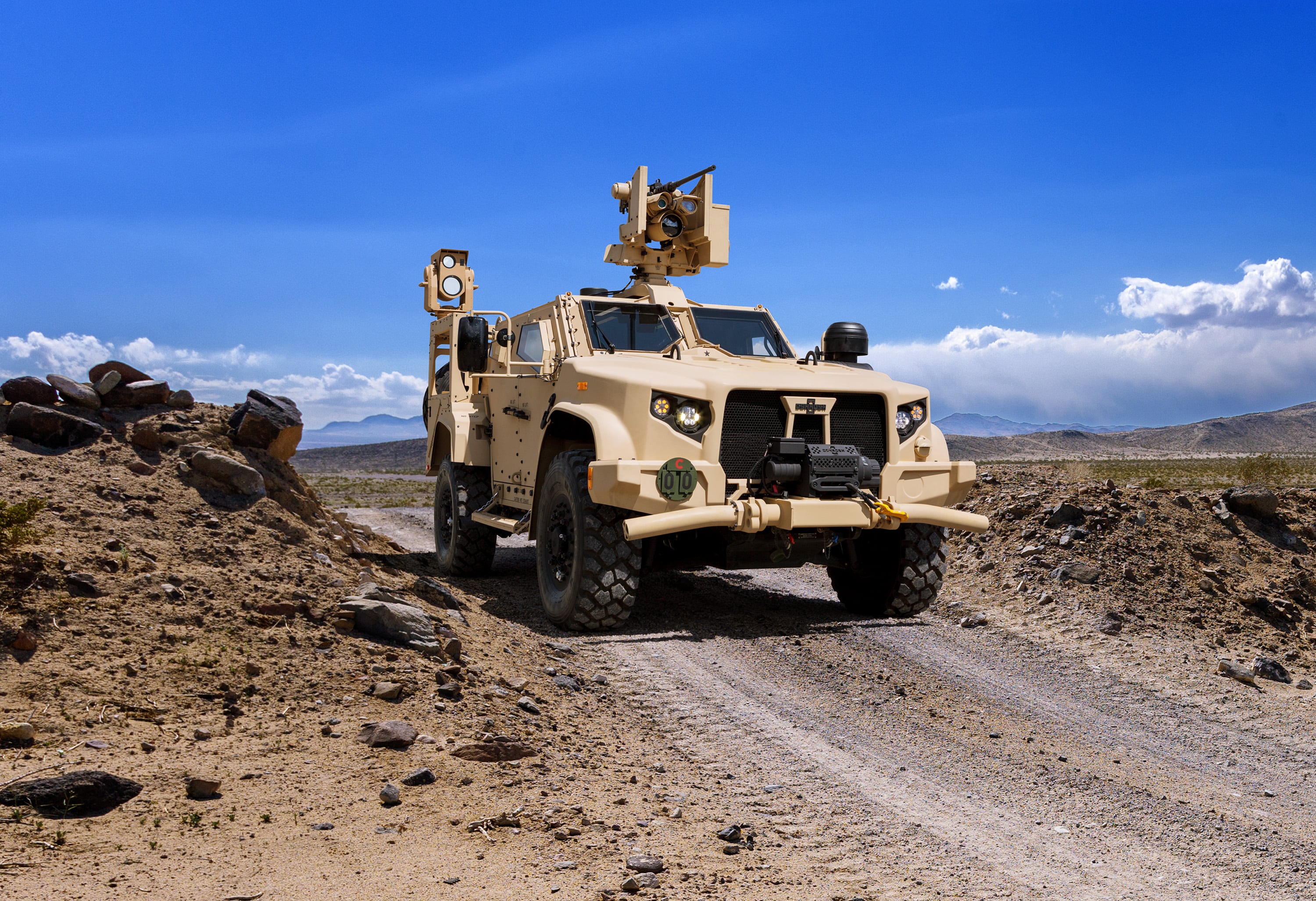WASHINGTON — The U.S. Army has approved the Oshkosh-built Joint Light Tactical Vehicle’s transition to full-rate production after a roughly six-month delay, according to a June 21 announcement.
Full-rate production for the JLTV was pushed from an original schedule of December 2018 out to May this year due to a number of changes to the Humvee replacement.
The Army decided to make a series of alterations as the result of soldier feedback, including a larger back window and the addition of a muffler. The approach was designed to minimize the cost and quantity of the vehicles that would need to be retrofitted, the vehicle’s program office told Defense News at the time.
The decision to delay the full-rate production did not stop the service from beginning to field 300 of the new vehicles to the Army’s 1st Brigade, 3rd Infantry Division at Fort Stewart, Georgia, making it the first unit equipped with the vehicle in April 2019.
“We are also grateful for soldier feedback on new features and enhancements,” Jeffrey White, the Army acquisition chief’s principal deputy said in the Army announcement. “The Soldiers of the 1st ABCT, 3rd Infantry Division provided valuable input on enhancements such as increased situational awareness, reduction of system noise, a troop seat kit, and a companion JLTV trailer. Their assessments helped bring us all to a successful Full-Rate Production decision.”
RELATED

Oshkosh beat out Humvee-maker AM General and Lockheed Martin in 2015 to build the replacement for the Humvee for both the Army and the Marine Corps. The low-rate initial production, or LRIP, contract was worth $6.7 billion, and the entire program is estimated to be worth $30 billion through 2024.
“Important insights from manufacturing and rigorous developmental and operational test during LRIP contributed to shaping the vehicle’s current configuration,” George Mansfield, vice president and general manager of joint programs for Oshkosh Defense, said in a statement sent to Defense News.
“The program remains on schedule and on budget, and ensures our troops have the protection, connection, and extreme off-road mobility they need today for current and future battlefields. The JLTV is the only light tactical vehicle being fielded today that can maneuver within combat formations,” he said.
At the time of the LRIP award, a total of 49,100 JLTVs were planned for the Army, not including what the Marine Corps is planning to buy as well as a small number for the Air Force and Navy.
The service cut its procurement of the JLTV in its fiscal 2020 budget request by 863 vehicles. The Army procured 3,393 vehicles in FY19 in LRIP but only plans to buy 2,530 vehicles in FY20. The Army originally planned in its FY19 request to buy 3,035 vehicles in FY20.
RELATED

It is unclear if more cuts will come for the JLTV. Army Secretary Mark Esper said at the time the FY20 budget rolled out that the vehicle was designed and procured in “the context of Afghanistan and Iraq,” and hence was just not as relevant anymore when applied to the fresh National Defense Strategy now guiding Army investment.
“We are certainly cutting the total number” of JLTV procurement, Esper said. “I know that much. But whether it settles out, finals out right here, today, I can’t tell you. In five years, I could maybe have a different number for you.”
While the JLTV was designed for the counterinsurgency fight — a light vehicle with the protection to endure the blast of an improvised explosive device much like mine-resistant, ambush-protected vehicles — Oshkosh has used the JLTV’s highly configurable design to increase firepower options on board a JLTV and to protect it from missile and rocket attacks.
RELATED

Over the past three years, it integrated remote weapon systems, a lightweight 30mm cannon paired with a 7.62mm coaxial machine gun, a Javelin integration kit, several .50-caliber machine guns, and a lightweight automatic chain gun, among other weapon systems.
The IMI Iron Fist Active Protection System and Rafael’s Trophy Light APS have both been integrated onto JLTVs for evaluation.
And the Boeing Maneuver Short-Range Air Defense launcher, which was not selected by the Army for its interim SHORAD solution, was also integrated onto the JLTV to include an M3P .50-caliber machine gun, M299 launcher with four Longbow Hellfire missiles, a sensor suite, and a communications suite with the Thales VRC-111.
Now that the Army has approved full-rate production for the JLTV, it is anticipated Foreign Military Sales prospects could begin more rapid materialization. Slovenia has already placed an order for a small number of JLTVs, and it’s likely the United Kingdom as well as Lithuania will be future customers.
Jen Judson is an award-winning journalist covering land warfare for Defense News. She has also worked for Politico and Inside Defense. She holds a Master of Science degree in journalism from Boston University and a Bachelor of Arts degree from Kenyon College.








